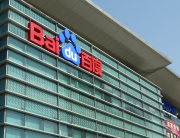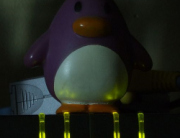There are lots of Search Engine Optimisation (SEO) terms out there, as you’d expect, and you could be lost in a tangle of inexplicable acronyms before you know it. However don’t fret; we’ve hooked you up with the most popular terms in the industry and decoded what their definitions are.
301 redirect
A 301 redirect is a redirection from one page to another, permanently and instantaneously, passing along a majority of the link “juice” or ranking with it. The 301 stands for the HTTP (hypertext transfer protocol) status code.
ALT text
ALT text is the description of an image in your site’s HTML code. As spiders or bots (we’ll define these shortly) can’t images, they use the ALT text to see what the image is all about. Having a description for the image will help the spider or bots identify what it is.
Anchor text
Anchor text is the text that is used to hyperlink between two places. Typically, it’s dark blue and underlined. If someone uses a specific term to link to your page, it gives an indication to search engine of what your site is about.
Black hat tactics
Black hat tactics/techniques/methods, sometimes just called ‘black hat SEO’, is the practice of using aggressive, unethical and spammy tactics to engineer a website’s rankings. This was commonly done before Google’s infamous algorithm updates changed the face of SEO. Common examples of this would be keyword stuffing, duplicated content, link farms and invisible hyperlinks. These tactics can lead to a ‘penalty’, which we define below.
Like this article? Do some further reading…
» How Google Evaluates New Search Algorithm
Bot/spider
“A spider or bot is a program that Google runs that goes out and crawls the Internet. When it comes to your site, it goes on and explores your articles, videos, pictures, comments, etc.,” explains Nicodemus.
Google Panda
Panda is the name of a series of changes Google makes to its search results ranking algorithm. The first change was released in February 2011 with the purpose of lowering the rank of “low-quality sites,” and raising higher-quality sites to the top of search results.
Google Penguin
Penguin is the name of a Google algorithm update, which was released in April 2012. It was released with the aim to decrease search engine rankings for sites that violate Google’s Webmaster Guidelines.
Heading
A heading, when talking in SEO terms, refers to text that’s been palced within a heading tag, such as H1 or H2. Typically this shows up larger than the rest of the text on the page. Although, if you were to simply increase the font size of some text and put it in bold, this wouldn’t be a heading per se (as far as search engines are concerned). In the HTML section of your websites (or more commonly, a WordPress page), a heading would be defined by using <h1>[text]</h1> in the code, or just clicking on ‘Heading 1’ or ‘Heading 2’ as a header.
Inbound links
Also known as backlinks, inbound links are links that are incoming from another website or page that direct or point back to your own site or page. These are either ‘Followed’ or ‘NoFollowed’, which means they’ll either pass link juice (juice used by search engines to rank your site/page higher), or not, respectively. A high quality, clean ‘Followed’ link from a relevant source is SEO gold.
Indexed page
An indexed page refers to a particular page on that has been “crawled”/read by search engine bots and been stored. Pages that haven’t been crawled yet will not appear on SERPS (search engine results pages, defined below)
Link building
Link building is when you purposefully earn highly relevant and quality links that point back to your site. Let’s say you own a small clothing store. You’ve got links coming from fashion blogs, reviewers and suppliers. These would be more valuable than if you had, say, inbound links from sports gear shops. You can guess which one Google prefers, and which one they’d rank you higher for.
Long tail keyword
A long tail keyword is a phrase rather than a single terms. An example of both would be a short tail keyword being “make pizza”, or, “pizza recipes”. A long tail keyword would be “how to make the perfect pizza”. Using long tail keywords such as this makes it a lot easier for smaller business to rank in search, whereas the keyword “make pizza” would be a highly competitive one. It’s a very specific way of doing search engine optimisation.
Metadata
Metadata is data that tells search engines what your site is about. Every web page has at least meta keywords, a meta title, and a meta description.
Meta description
Written in 155 characters or less, this is a description of what a specific page is about. It’s written in the page’s HTML code and shows up on search engine results pages below your title. Lots of blogs have SEO features built in to enable you to write meta descriptions and titles, such as Yoast for WordPress.
MozRank
SEO marketing software company Moz has a link ranking tool called MozRank; which has an algorithm that looks at the number of inbound links you have, what their quality is and assigns you a number from zeo to 10.
PageRank
Assigned by Google, PageRank is a number from zero to 10 that lets you know what your overall SEO score is. The higher the number the better. It works incrementally in the way that getting from rank 3 to 4 is harder than 2 to 3.
Penalty
A penalty – typically a Google Penalty – is a negative impact on your site’s rankings based on a search engine’s algorithms. There are two different types of penalties: manual and algorithmic. This latter is an automated penalty whilst the former is one that’s been activated by a real Google member. It’s generally understood that a manual penalty is the worse of the two as it required a person to physically knock your website down the rankings.
Rel: nofollow
As explained higher up, a NoFollow link passes no SEO juice whatsoever. Rel: nofollow is the tag you put on your blog or site before a link which indicates to search engine crawlers that it is such.
SEM
SEM is an abbreviation of search engine marketing. Pay-per-click – paid advertisements – abbreviated as PPC, is one type of SEM. The important difference between SEM and SEO is the fact that the latter refers to organic optimisation and the former refers to paid rankings.
SERP
SERP stands for ‘search engine results page’. This is the page you see when you search for a term or phrase on Google/Bing/Yahoo. Typically, it’s the term you’re looking for, a list of websites that are ranking for the keyword with a URL and a short two-line description, as well as the “sponsored links” or paid SERP listings on the side or top of the page
Sitemap
A sitemap is a page within your website’s catalog that tells bots where to look for stuff on your website, and how everything is organised. This is a very valuable necessity for websites that have lots of pages, such as ecommerce sites. It proves most valuable when a search engine spiders comes to crawl your page. It’s kind of like saying “Take a look at the map of our website we’ve made for you”.
Liked this article? We’ve got a lot more >>
The Tandem of Paid & Organic – How You Can Maximize the Value of Both









